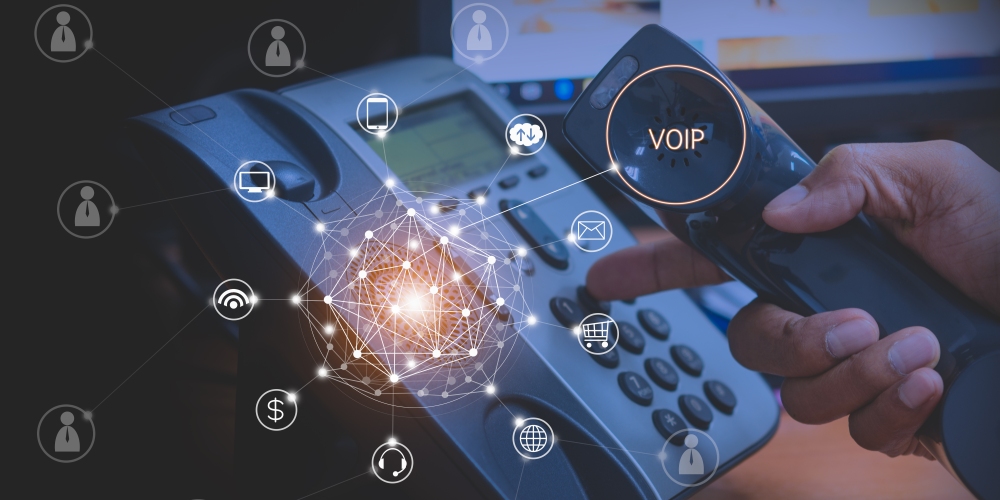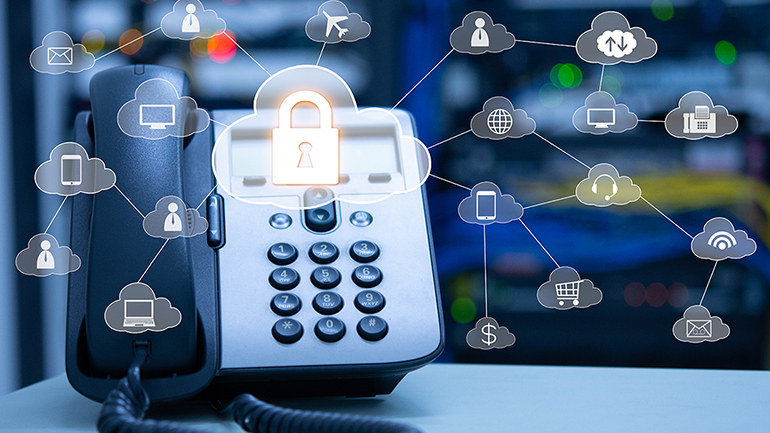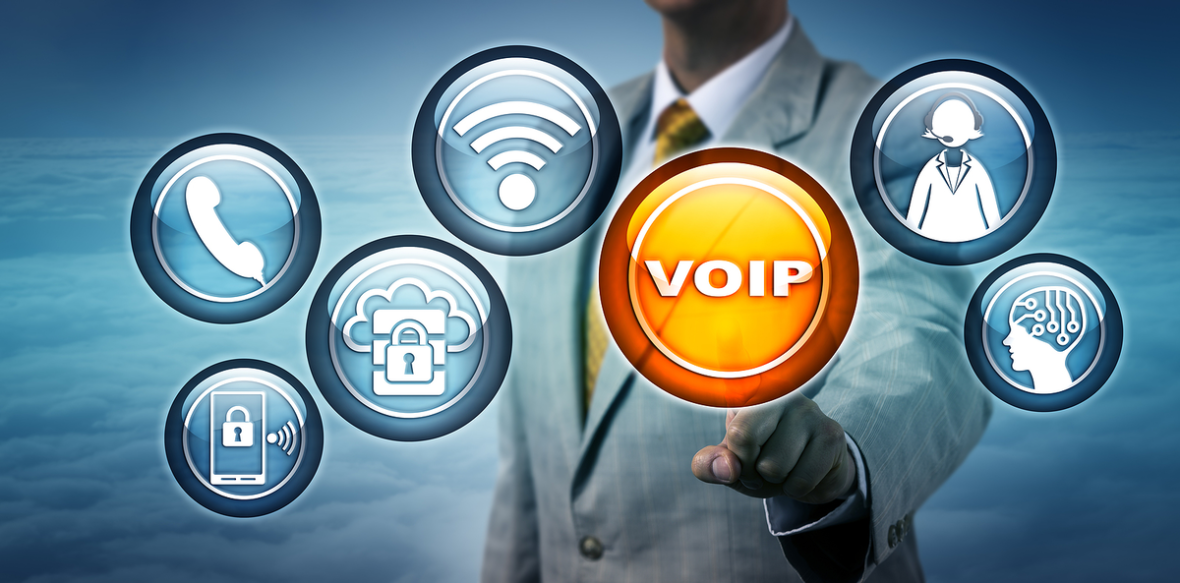What is VoIP communication? How does VoIP work? Should I be using this technology? These are the questions that trouble modern entrepreneurs. Take a look below for 30 interesting and fun facts about VoIP communication.
1. VoIP stands for ‘Voice over Internet Protocol’. This is what most people already know. Over the years, terms like ‘IP Telephony’, ‘Internet Telephony’, and ‘Broadband Telephony’ have fallen in and out of use depending on the sector and the manner in which VoIP has been deployed.
2. VoIP works by turning voice signals into packets that are transmitted over a packet-switched network. This is in contrast to traditional phone systems that send analogue voice signals over a circuit-switched network.
3. You need a VoIP-compatible device to access the services of a VoIP vendor. These include a dedicated VoIP phone with wired Ethernet (or even Wi-Fi), an analogue phone with an adapter that connects to a network, and software applications that enable a smartphone or computer with a speaker and a microphone to initiate VoIP communication.
4. VoIP communication started way back in 1973. Or at the very least, this was when the first VoIP call was made. The internet as we know it today did not exist, so the call had to be made using an earlier version known as ARPANET.
5. The first VoIP call was made between the Information Sciences Institute and the Lincoln Lab in the United States. The voice sample transmitted between the computers in these two locations was sent at 16 kb/s, which isn’t that impressive by today’s standards.
6. The first VoIP call in 1973 was somewhat disappointing because it was one-way. Two-way communication via VoIP happened for the very first time in 1974, just a year later.

7. VoIP is known for permitting users to make phone calls without the use of a physical phone. Once you’ve downloaded the relevant software, you can make and receive phone calls using your computer. The first software of this kind was made by Vocaltec.
8. VoIP underwent numerous changes in the years following the successful IPO launch of Vocaltec in 1996. In the US, by 1998, 1% of all the voice traffic in the country consisted of VoIP data. It was around this time that companies like Cisco and Lucent made a splash in the VoIP arena, introducing hardware that could route and switch VoIP traffic more efficiently.
9. VoIP contributed immensely to the massive outsourcing trend seen in America in the 1990s. People were drawn to the technology because it was cheaper. Companies realised that they could easily redirect calls between the US and other countries and this encouraged them to open call centers in nations where labour was much cheaper.
10. Companies were not the only ones using VoIP. To attract the average user, service providers used advertising to subsidise costs. VoIP users were forced to endure ads of varying lengths before each call. This trend receded and eventually vanished once the technology advanced.
11. VoIP communication became commonplace in the public space in the early 2000s. By this time, Cisco and Nortel had taken the technology’s functions off the shoulders of the computer’s CPU, developing more powerful devices that could switch and route voice data with greater efficacy. As a result, by 2004, the public was introduced to VoIP plans that mirrored those offered by traditional telecommunication companies.
12. Companies use hosted VoIP solutions because they promise a 90% reduction in the cost of international calls. This makes the technology attractive to businesses that wish to expand abroad.

13. Besides the money it saves individuals, businesses in the UK can count on VoIP to reduce the cost of their local calls by 40%.
14. It isn’t just the utility and infrastructure costs that VoIP has reduced. Because VoIP is so quick and clear, most employees save an average of 32 minutes each day. That specifically refers to the conventional worker. Mobile workers can save 40 minutes per day. Communication is more efficient. As a result, businesses are more efficient.
15. If your company has at least 25 phones, a VoIP service could save as much as a thousand pounds in a month!
16. You can cut the costs associated with teleconferencing by 30% if you use VoIP communication.
17. Not only are VoIP calls cheap but maintenance is just as inexpensive. You can cut business communication costs by an amazing 92%.
18. People think that the quality of VoIP calls is poor. But in truth, the sound quality of hosted VoIP PBX calls is superior to what you normally encounter with legacy PTSN lines. The range offered by PTSN technology (300-3400 Hz) can be confusing to the human ear. With a range of 50 Hz-7 kHz, VoIP guarantees a high definition sound. Phone calls are much clearer because it is easier to differentiate sounds.

19. To further enhance the quality of the sound, VoIP communication consists of silent data that adds stability to your call by saving bandwidth.
20. It isn’t just VoIP service providers and telecommunication companies that are pushing the proliferation of VoIP. 54% of the leading voices in the Information Technology arena believe that business entities require VoIP to advance.
21. If you think that VoIP doesn’t live up to the hype, you’re in the minority. Of all the businesses that have used the technology, 75% are satisfied with the technology’s functions.
22. If you refuse to join the VoIP train, the business landscape will soon leave you behind. Predictions from experts suggest that a whopping 91% of all businesses in the world will adopt a hosted VoIP solution by 2021.
23. If you live in the UK, you don’t really have the option of rejecting VoIP. The country’s ISDN Network will seize to exist in 2025 meaning that all businesses will have no choice but to switch to a VoIP phone system.
24. Governments and businesses all over the world are already throwing their support behind VoIP. That support is expected to grow in the near future, with spending on long-distance VoIP calls reaching £100 billion by 2024.

25. You don’t need a handset to use VoIP. Calls can be made using any device that can connect to the internet.
26. With cloud-based VoIP, you don’t require any on-site hardware installations of any kind to enable communication.
27. While hosted VoIP PBX technology is most commonly associated with video and voice calls, you can also communicate via SMS and chat.
28. VoIP communication isn’t only free and simple between individuals. You can also call multiple sites without incurring any additional costs.
29. A lot of people don’t know that Skype uses VoIP technology to enable communication between users.
30. Industry experts were quite optimistic about the future of VoIP in the 2000s. This is because VoIP calls totaled 204 billion minutes in 2005.




